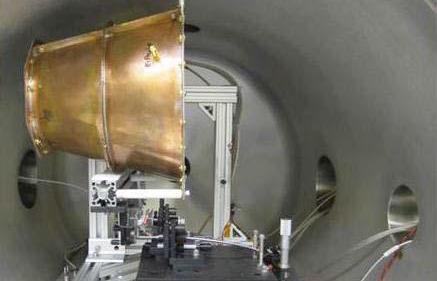The idea of bringing human beings to far-off destinations in space has a lot of limitations in reality. The EmDrive (originally invented by Roger Shawyer) could cut down on some of those limitations, with one major caveat: It shouldn’t work. However, testing by a division of NASA has shown that it might, and the results of their work have been approved for publishing in a scientific journal.
The work was published in the American Institute of Aeronautics and Astronautics’ Journal of Propulsion and Power after a leak online a few weeks earlier, but word of the EmDrive’s possibilities has been circling the Internet for some time. The engine creates thrust by bouncing microwaves around inside an enclosed space, which means that nothing is being jettisoned from the back, as with a traditional rocket.
With nothing pushed out in the opposite direction, the EmDrive really shouldn’t be able to create any forward movement in the vacuum of space, and yet tests indicate that it does. However, this single published paper isn’t the end of the road for the device, which will go through further testing to ensure that outside anomalies and influences weren’t the cause of the minute thrust readings.
However, should it prove to work, the EmDrive would be a much more efficient way for a spacecraft to generate thrust outside of the Earth’s atmosphere, allowing it to continuously accelerate with energy gathered by solar panels alone. That would remove the need for a spacecraft to carry excess rocket propellant and put significantly higher speeds within reach, along with the distant locations they’d be used for.
We’re still skeptical, as everyone should be with technology that breaks our understanding of what’s possible, but we’re excited to watch this research progress.
(via Space.com, image via NASA)
Want more stories like this? Become a subscriber and support the site!
—The Mary Sue has a strict comment policy that forbids, but is not limited to, personal insults toward anyone, hate speech, and trolling.—
Follow The Mary Sue on Twitter, Facebook, Tumblr, Pinterest, & Google+.









Published: Dec 4, 2016 03:30 pm